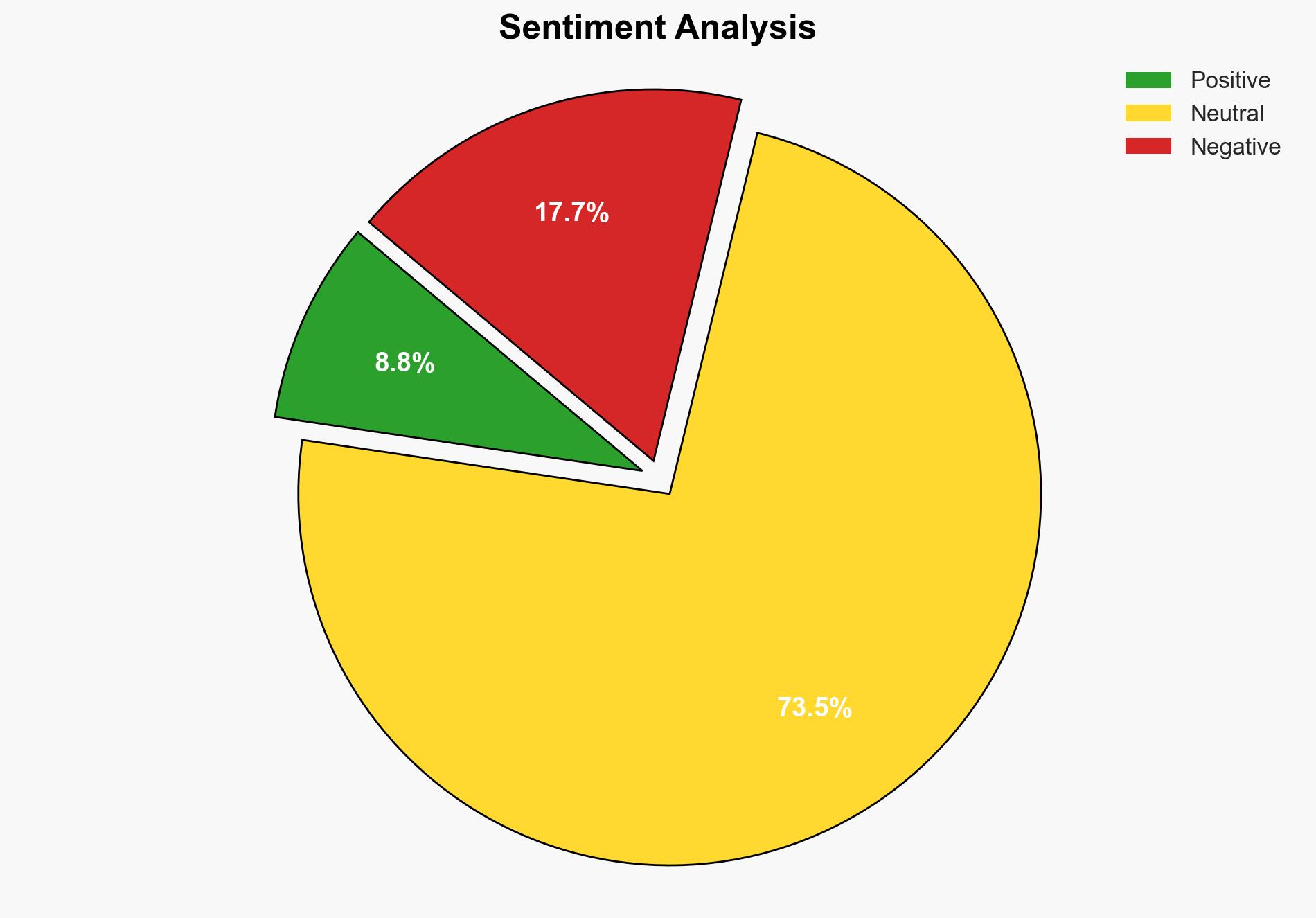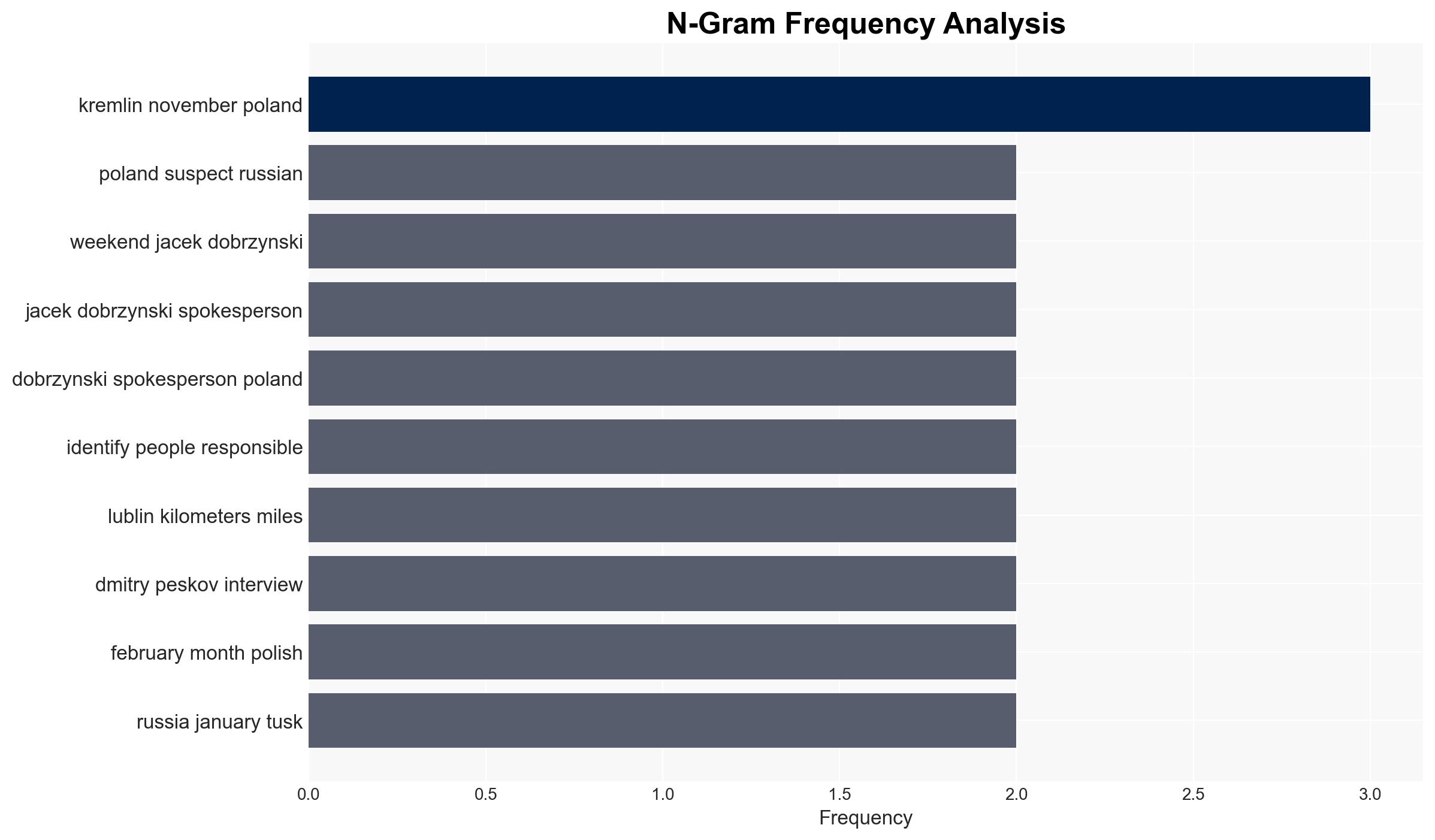Poland Suspects Russian Sabotage Behind Railway Explosion – Globalsecurity.org
Published on: 2025-11-19
AI-powered OSINT brief from verified open sources. Automated NLP signal extraction with human verification. See our Methodology and Why WorldWideWatchers.
Intelligence Report:
1. BLUF (Bottom Line Up Front)
With a moderate confidence level, it is assessed that Russian intelligence services are likely responsible for the sabotage of the Polish railway line. This aligns with Russia’s broader strategy of hybrid warfare aimed at destabilizing European support for Ukraine. Recommended actions include strengthening infrastructure security and enhancing intelligence-sharing with European allies.
2. Competing Hypotheses
Hypothesis 1: Russian intelligence services orchestrated the sabotage to destabilize Poland and disrupt military logistics to Ukraine. This is supported by historical patterns of Russian hybrid warfare and recent tensions between Russia and Poland.
Hypothesis 2: The sabotage was carried out by independent actors or a non-state group with motivations unrelated to Russian state directives. This hypothesis considers the possibility of false-flag operations or domestic unrest.
Hypothesis 1 is more likely due to the strategic benefit to Russia and the pattern of similar incidents in the region. However, the lack of conclusive evidence necessitates caution.
3. Key Assumptions and Red Flags
Assumptions: It is assumed that the explosion was intentional and not an accident. There is also an assumption that Russian intelligence has the capability and motive to conduct such operations.
Red Flags: The timing of the incident coincides with increased military aid to Ukraine, which could be a deliberate attempt to disrupt supply lines.
Deception Indicators: Russian denials and accusations of Russophobia may be attempts to deflect blame and sow discord within Europe.
4. Implications and Strategic Risks
The incident could escalate tensions between NATO and Russia, potentially leading to increased military posturing. There is also a risk of further infrastructure attacks, which could strain European unity and economic stability. Cyber threats may increase as part of a broader hybrid warfare strategy.
5. Recommendations and Outlook
- Enhance security measures for critical infrastructure, particularly in transportation and energy sectors.
- Increase intelligence-sharing and coordination with NATO and EU partners to preempt further attacks.
- Best-case scenario: Strengthened European resolve and security measures deter further incidents.
- Worst-case scenario: Escalation into broader conflict or significant disruption of military logistics.
- Most-likely scenario: Continued low-level hybrid warfare tactics by Russia, with sporadic incidents targeting infrastructure.
6. Key Individuals and Entities
Donald Tusk, Jacek Dobrzynski, Dmitry Peskov, Władysław Kosiniak-Kamysz
7. Thematic Tags
Structured Analytic Techniques Applied
- Cognitive Bias Stress Test: Expose and correct potential biases in assessments through red-teaming and structured challenge.
- Bayesian Scenario Modeling: Use probabilistic forecasting for conflict trajectories or escalation likelihood.
- Network Influence Mapping: Map influence relationships to assess actor impact.
Explore more:
National Security Threats Briefs ·
Daily Summary ·
Support us





